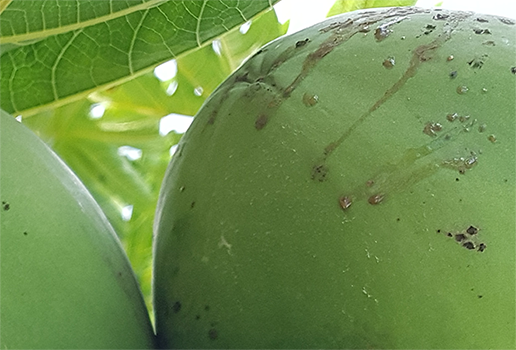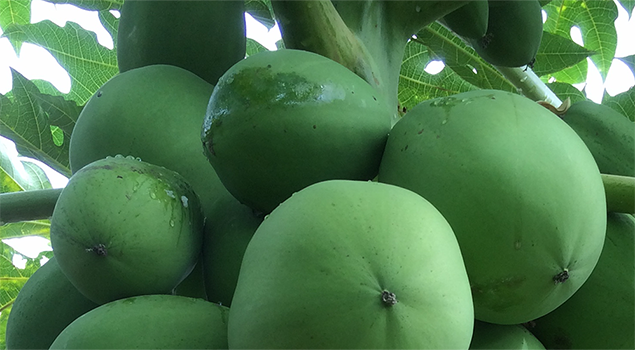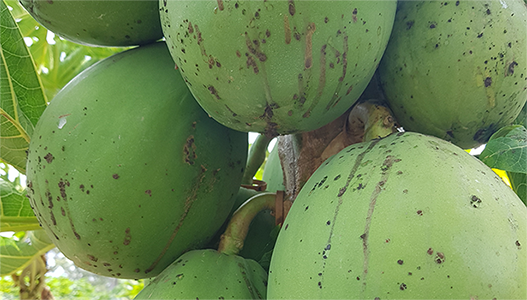Look and report
Papaya sticky disease is a declared pest in Western Australia.
Papaya sticky disease is not known to occur in Western Australia (WA) and must be reported to the department if found or suspected to be present in WA. It has been reported from the Northern Territory and Queensland. Early detection and reporting of possible cases is critical to protect the WA papaya industry.
What is papaya sticky disease?
Papaya sticky disease is a viral disease caused by 2 viruses, Umbravirus papaya meleira virus 2 and Totivirus papaya meleira virus. It is also known as papaya meleira virus.
Papaya sticky disease can spread rapidly through papaya plantings, making the fruit unattractive and unmarketable. Papaya growers are urged to check their papaya plants for signs of discharge of watery translucent latex from undamaged green fruit that hardens and darkens upon contact with air.

What plants are affected?
Papaya sticky disease only affects papaya (pawpaw).
What do I look for?
- The most obvious sign of papaya sticky disease is discharge of watery latex from undamaged green fruit.
- The latex is translucent and more liquid than latex from healthy fruit.
- The latex turns brown and hardens after contact with the air.
- Latex is also secreted from the edge of young leaves at the top of the plant, and leaf tips and borders turn brown.
- Diseased fruit tastes unpleasant.
What damage can this disease cause?
- Plants with papaya sticky disease cannot be cured.
- Spread of the disease to healthy plants may be reduced by pulling out infected plants, but papaya sticky disease can spread to 100% of a crop by the time harvest would normally begin.
- Infected fruit is unmarketable because it is unsightly and flavour is compromised.

How does papaya sticky disease survive and spread?
- Papaya sticky disease is caused by virus which is present in all parts of the plant.
- Two viruses can work together to cause sticky disease
- The disease can spread from plant to plant through pruning and fruit picking.
- Papaya sticky disease can be spread in infected tissue culture plants.
- It is suspected that leafhoppers or whiteflies may also spread papaya sticky disease, but this has not been proved.
- Infected seeds produce infected plants.
Legal duty to report
Papaya sticky disease is not known to occur in WA. Umbravirus papaya meleira virus 2 and Totivirus papaya meleira virus) are declared pests under section 12 of the Biosecurity and Agriculture Management Act 2007.
This means that any person who finds or suspects the presence of papaya sticky disease must report it to the department.
WA's freedom from papaya sticky disease is supported by general and specific surveillance, and specific import requirements to prevent its entry.
-
Papaya sticky disease - biosecurity alertpdf (1.58 MB)

